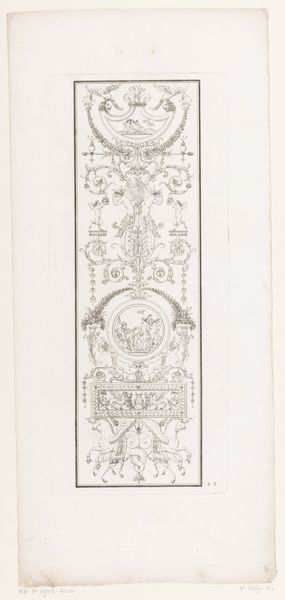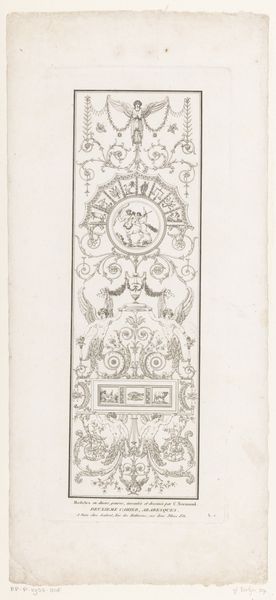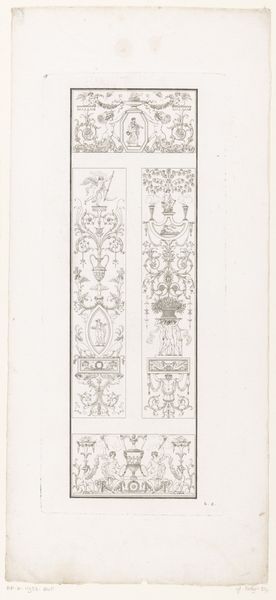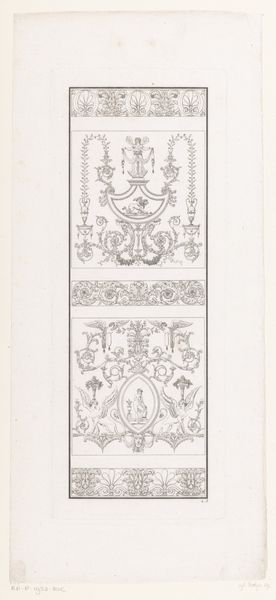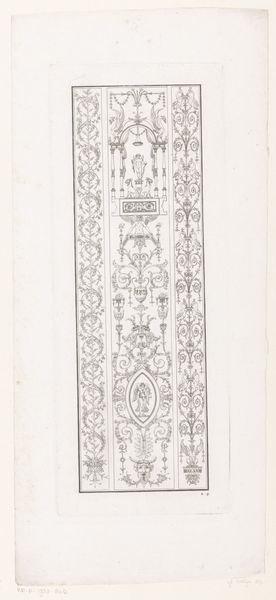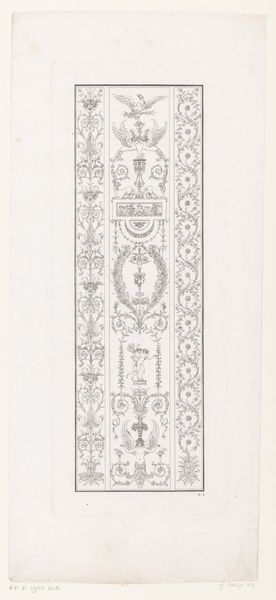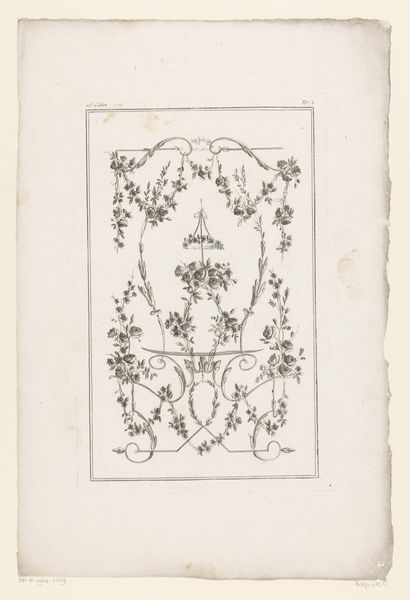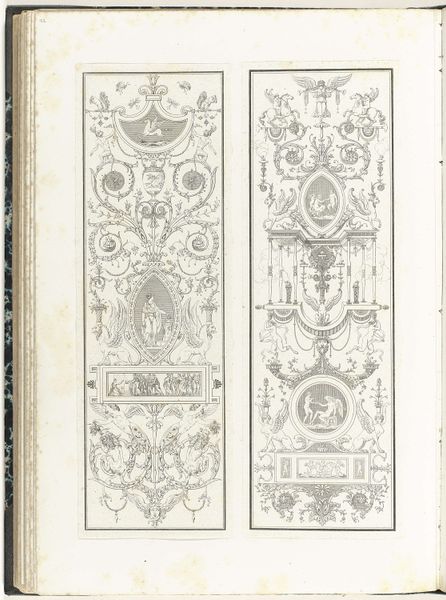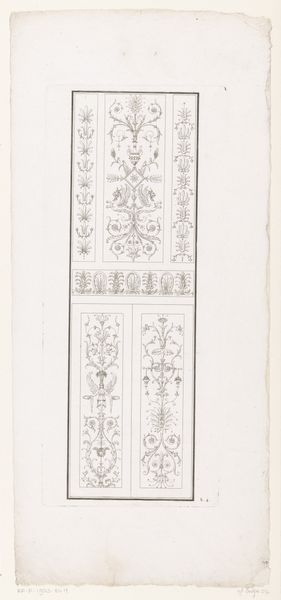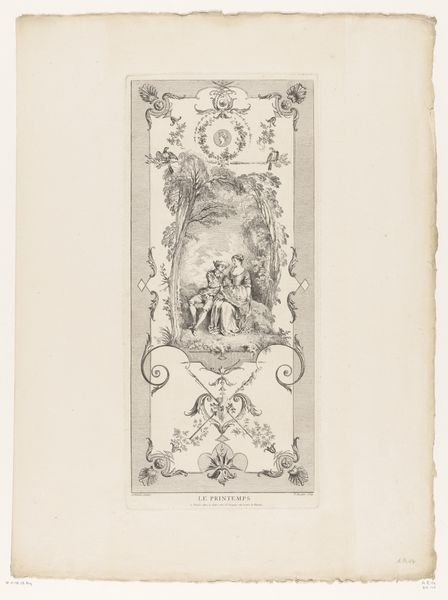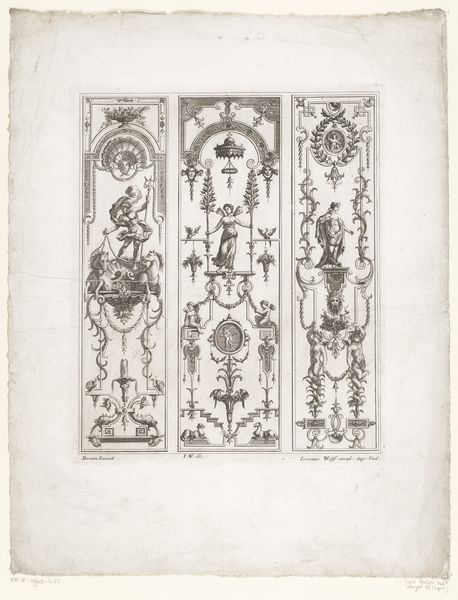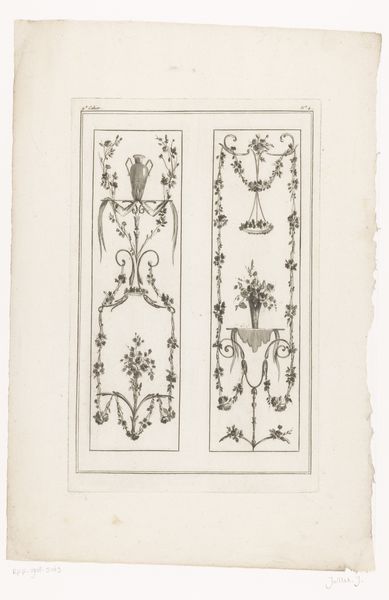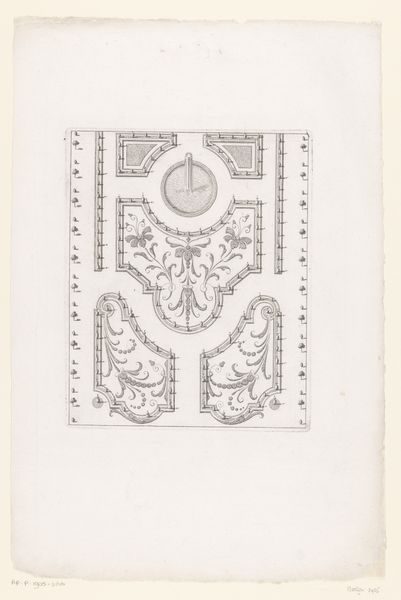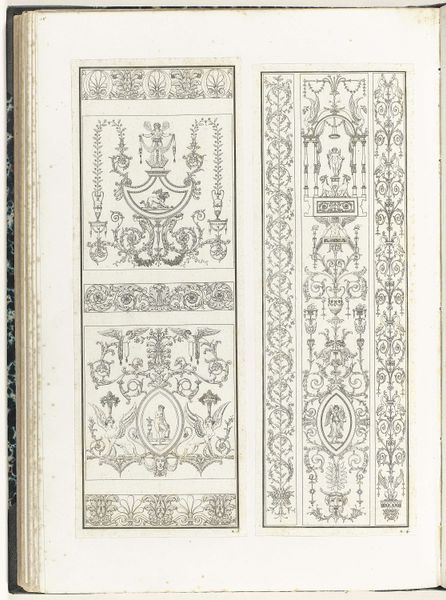
Dimensions: height 340 mm, width 138 mm
Copyright: Rijks Museum: Open Domain
Curator: This is an engraving from 1803 by Charles Pierre Joseph Normand, titled "Arabesken met engelen en griffioenen". Editor: It looks like an intricate ornamental design. I immediately notice how incredibly detailed it is— almost lace-like, the textures must have required serious labor. Curator: Absolutely. We see echoes of Baroque exuberance adapted within a Neoclassical frame. The arabesque style combines those stylized, intertwined patterns of organic and mythological forms. Notice the figures of angels and griffins interwoven with foliage. Considering this was produced in the early 19th century, as Napoleon rose to power, we can consider how classical motifs were being appropriated. Editor: Right, how empires often bolster their authority by referencing earlier ones, projecting a lineage. Thinking about the engraving process itself, it would have involved meticulous work by an artisan, translating designs for reproduction. The production suggests a demand for decorative arts accessible to a wider audience. Who was commissioning it? Where was it used and consumed? Curator: Excellent questions! Prints like these circulated as models for artisans and architects – disseminated across geographic borders and socioeconomic divides. It offers an understanding of aspiration as linked with power – which has long been limited to those controlling production and labor. Editor: Yes, and it also forces us to confront our definitions of 'art'. Engravings such as these might traditionally be considered decorative or secondary, but understanding the process and its impact elevates their relevance in our examination of historical materialism. Curator: Precisely. This engraving offers more than visual pleasure; it prompts questions of class, influence, and how artistic techniques shape societal values. Considering whose stories often go unrecorded in mainstream histories, objects such as these may hold surprising power. Editor: I agree. Looking closer at this "minor" object reveals entire systems of value, craft, and societal ambition—a material footprint that opens dialogues. Curator: Indeed. I leave contemplating its function beyond decor as linked inextricably to power itself.
Comments
No comments
Be the first to comment and join the conversation on the ultimate creative platform.
